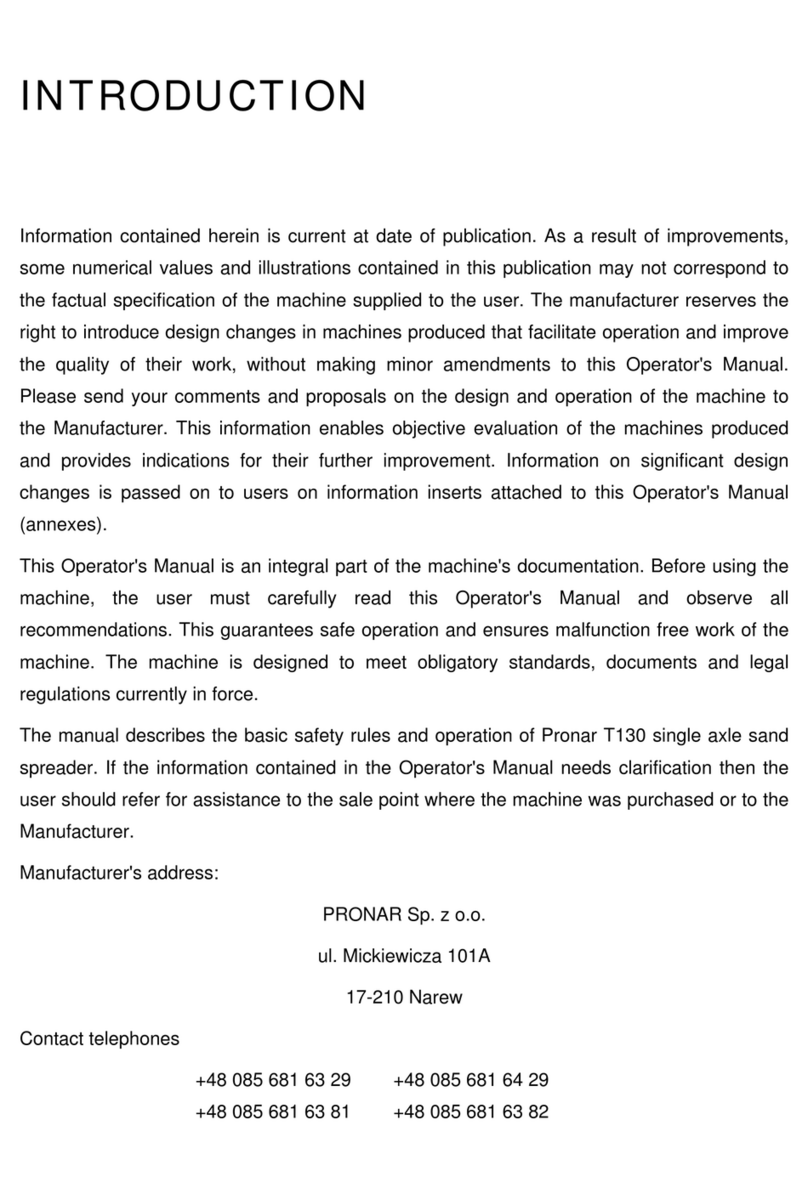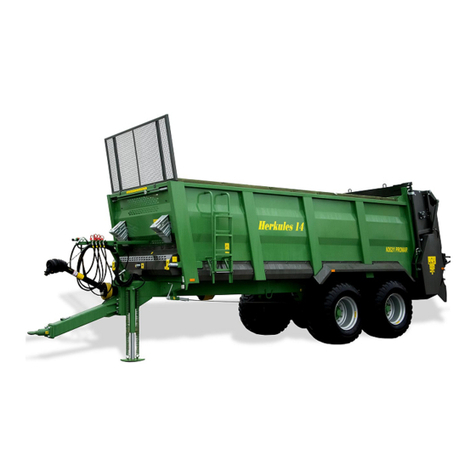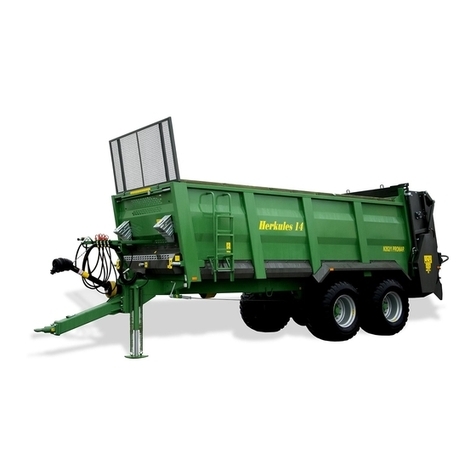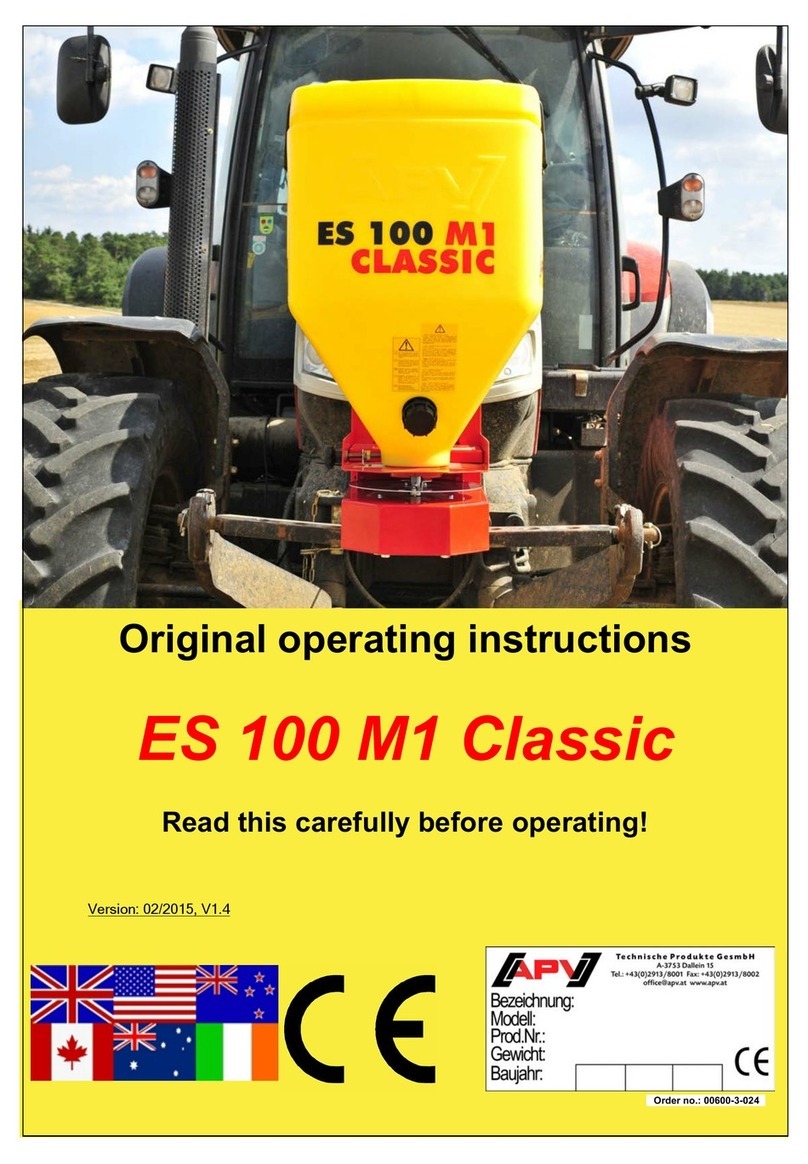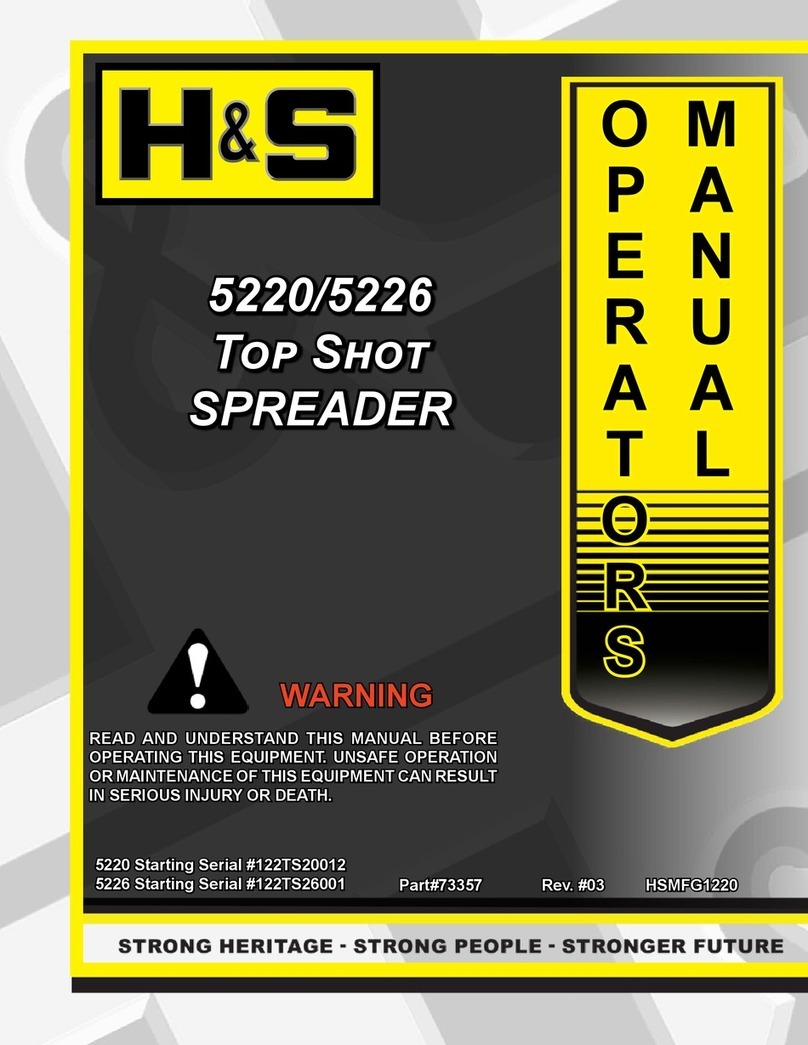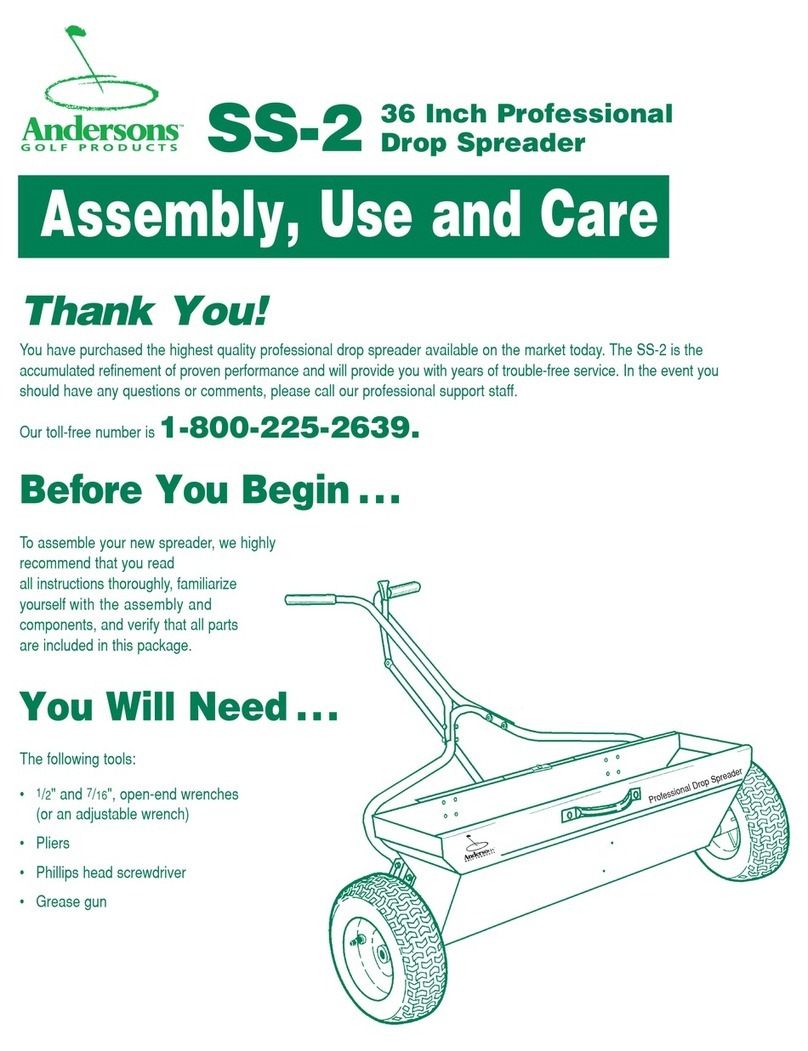
5.2.4 MOUNTING AND DISMOUNTING WHEEL, INSPECTION OF
WHEEL NUT TIGHTENING. 5.7
5.2.5 CHECK AIR PRESSURE, EVALUATE TECHNICAL CONDITION
OF WHEELS AND TYRES 5.9
5.2.6 MECHANICAL BRAKES ADJUSTMENT 5.10
5.2.7 CHANGE OF PARKING BRAKE CABLE AND ADJUSTMENT OF
CABLE TENSION. 5.12
5.3 PNEUMATIC SYSTEM MAINTENANCE 5.14
5.3.1 PRELIMINARY INFORMATION 5.14
5.3.2 INSPECTING AND CHECKING AIR TIGHTNESS OF
PNEUMATIC SYSTEM. 5.15
5.3.3 VISUAL ASSESSMENT OF SYSTEM 5.16
5.4 CLEANING THE AIR FILTERS 5.16
5.4.1 DRAINING WATER FROM AIR TANK 5.18
5.4.2 CLEANING DRAIN VALVE 5.19
5.4.3 CLEANING AND MAINTAINING PNEUMATIC LINE
CONNECTIONS AND PNEUMATIC SOCKETS 5.20
5.5 HYDRAULIC SYSTEM OPERATION 5.20
5.5.1 PRELIMINARY INFORMATION 5.20
5.5.2 CHECKING HYDRAULIC SYSTEM TIGHTNESS 5.21
5.5.3 CHECKING TECHNICAL CONDITION OF HYDRAULIC
CONNECTIONS AND SOCKETS. 5.21
5.5.4 CHANGING HYDRAULIC CONDUITS 5.22
5.6 LUBRICATING THE SLURRY TANKER 5.22
5.6.1 CONSUMABLES 5.25
5.7 CLEANING THE SLURRY TANKER 5.27
5.8 STORAGE 5.28
5.9 TIGHTENING TORQUE FOR NUT AND BOLT
CONNECTIONS 5.29
5.10 PREPARATION PROCEDURE BEFORE ENTERING THE
TANK 5.30






